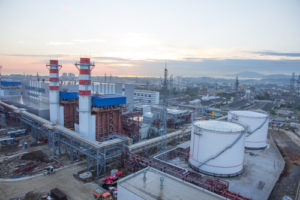APPLICATIONS OF TECHNOLOGY:
- Large scale thermal energy storage (e.g., power plants, power utility companies, large industrial manufacturing plants)
BENEFITS:
- Cost-competitive form of long duration energy storage that is particularly apt for incorporating more intermittent renewable energy into the electricity grid and industrial manufacturing
- Enables refineries to operate on all renewable energy with zero emissions and independent of fossil fuel availability or prices
- Geographically agnostic and arguably the safest form of energy storage
- Can be made modular (i.e., is very scalable and efficient for commercialization and manufacturing)
BACKGROUND:
- High temperature thermal energy storage (HT-TES) has a lower levelized cost of storage (in some cases by more than 100x) than other forms of energy storage. It can be deployed anywhere and does not require specific topographical features. It is a safe form of energy storage because it cannot explode. Finally, it can be made modular and therefore is very scalable.
TECHNOLOGY OVERVIEW:
Researchers at Berkeley Lab have developed a composite material composed of a ceramic and electrically conductive additive sintered together. Analysis and experiments indicated that silicon carbide (SiC) is a good all-around choice for the ceramic component.
The material can be electrically heated directly, converting electricity into heat, where it stores that heat for up to hundreds of hours at high temperatures over 1000°C. The stored energy can be dispatched later as heat or converted back into electricity. Thermal insulation at these scales is tractable to allow for minimal heat loss. This material and levelized cost of storage is estimated to be more competitive than most batteries for large scale storage, in excess of megawatt-hour capacities.
The resulting composite exhibits an important combination of appropriate properties for thermal energy storage, including appropriate thermal and electrical conductivities, heat capacity, mechanical strength, high temperature survivability, and thermal cycle fatigue resistance (i.e., no degradation)
DEVELOPMENT STAGE: Proven principle
PRINCIPAL INVESTIGATORS:
STATUS: Patent pending.
OPPORTUNITIES: Available for licensing or collaborative research.
SEE THESE OTHER BERKELEY LAB TECHNOLOGIES IN THIS FIELD:
Customizable and Scalable Ultra-thin Composite Membranes via Atomic Layer Deposition 2021-068
Ceramic-Metal Composites for Electrodes of Lithium Ion Batteries IB-2253
